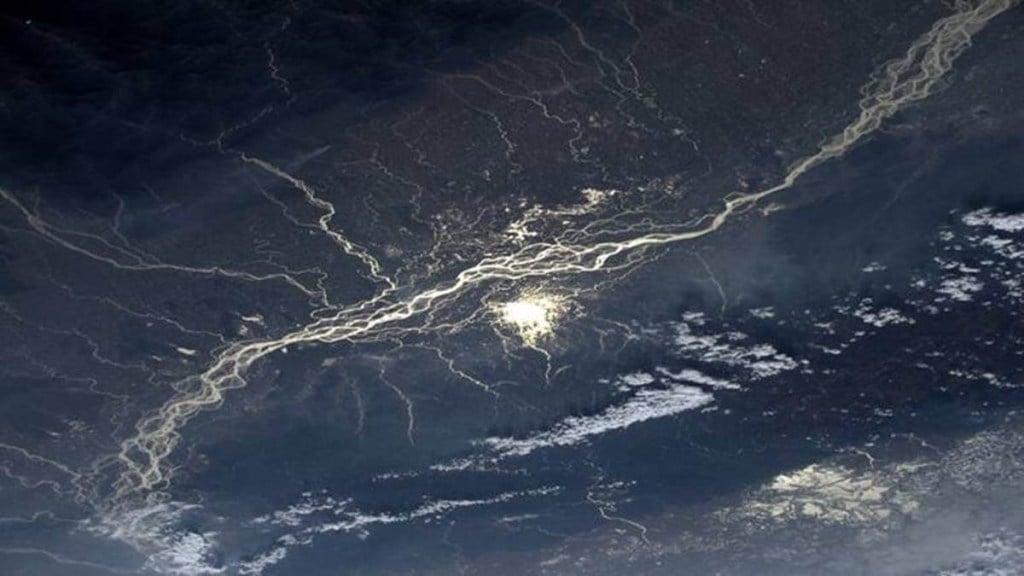Neeraj Singh Manhas and Shalini Singh
India’s relations with China are complicated and strained. Chinese hostility against India has been worse in recent years. India and China are competing to create new projects to address their water shortages as both countries experience growing consumption among their citizens and demographic and economic growth. This situation is aggravated further by water disputes between India and its neighbors and inter-state river water disputes inside India. Despite signing many Memorandums of Understanding on improving communication and strategic trust, China’s dam-building and water-division plans along the Brahmaputra (known as the Yarlung Zangbo in China) are a source of conflict between the two neighbors.
Nexus of Hydropolitics
China has often played against India’s best interests. India seeks hydrological information from China. In basic terms, it refers to water movement/flow, distribution, and quality. India requires hydrological data to develop its diverse infrastructure, including dams, bridges, lakes, etc. For Early Food Warning, i.e., for relocation of cattle, humans, and other resources, data is required. India still needs to build these capacities, which has led to periodic disasters in the North East and Kashmir regions.
China is an upper riparian state. In other words, the water flows from China, emerging from the Tibetan plateau to India, Bangladesh, and South East Asian countries. Therefore, China indirectly controls water flow. China has manipulated the flow of water in accordance with its whims by constructing a variety of dams, artificial lakes, etc. Consequently, India and Bangladesh experience droughts during the summer due to a shortage of water flow in the Brahmaputra and its tributaries, but they experience major flooding when China releases water during the rainy season.
The Game of Dams
Dam construction near border areas has become a huge concern for all the parties involved. The dam construction activities have quite accelerated recently in the backdrop of deteriorating relations between India and China and these dams not only have geopolitical implications for India but also for Nepal, Bangladesh as well as other countries. For instance, China is constructing a dam on a Mabja Zangbo river in Tibet, which flows through Nepal into the Ghaghara river before joining the Ganga in India, a close trijunction between India, Nepal, and China as revealed by satellite images.
In November 2020, Beijing revealed plans to build a “super hydropower dam” near the Brahmaputra River in India on the lower reaches of the Yarlung Tsangpo river in the foothills of the Himalayas. For both India and China, Brahmaputra plays a significant role in their socio-economic development. China’s decision to build a super dam will directly affect the quantity of water available downstream for India and might accelerate the deterioration of relations between both countries.
China being an upper riparian country, has not entered into any legally binding commitments to direct, and control the flow of transboundary rivers. This puts China in a fairly advantageous position and has the power to redirect the flow of water in the North Eastern region of India. Any hydro project planned by China has the potential to impact the Indian share of water due to its high dependence on the Brahmaputra River and is thus critically evaluated by India. Continuously deteriorating relations accompanied by frequent border clashes make it difficult to imagine that China, being the responsible neighbor, will release water in a regulated manner. China’s own consumption, usage, and regulation of water will not just impact India but also Bangladesh, which also has a high dependence on Brahmaputra. China has the capability to weaponize the water and use it to its advantage. India has signed water treaties with almost all of its neighbors except China.
China’s stance can be understood by its adherence theory of Absolute Territory Sovereignty which says that the riparian State has the absolute freedom to utilize the water flowing in its territories regardless of any effects upon other riparian States. This doctrine has been rejected by international customary law on the basis that it is too extreme.
China has already obstructed the flow of the Xiabuqu river, one of Brahmaputra’s Tibetan tributaries, for the Lalho hydel project. Post Galwan Valley clash, China also blocked the flow of the Galwan river, a major tributary to the Indus river originating from China’s occupied Aksai-Chin area thus controlling the flow of the river, preventing it from entering India.
Way Forward and Conclusion
India needs to have a cohesive and more inclusive engagement with its neighboring states sharing its water sharing problem who might be able to understand the situation. It depends on India to present a situation in a way to convert a reluctant China attitude to ready-to-talk. Also, diplomatic persuasion and discussion about the long-term implications of this continuous dam-building process by China including environmental concerns such as frequent earthquakes, floods, glacial bursts, and damage to the natural course of water might bring China to the table. Also, a unified voice by all the South Asian neighbors might also impact China’s decision to stop building excessive dams.
India can also seek to reduce its dependence on river water in the North Eastern region and enhance its developmental footprint to ensure economic growth and build water harvesting, storing, and recycling techniques. This will not only help to move towards sustainable development but also reduce dependence on the unstable supply of river water.
Neeraj Singh Manhas is the Director of Research in the Indo-Pacific Consortium at Raisina House, New Delhi. Shalini Singh is a Doctoral Scholar at Amity Institute of International Studies, Amity University, Noida. Views expressed as personal.
Disclaimer: Views expressed are personal and do not reflect the official position or policy of Financial Express Online. Reproducing this content without permission is prohibited.

